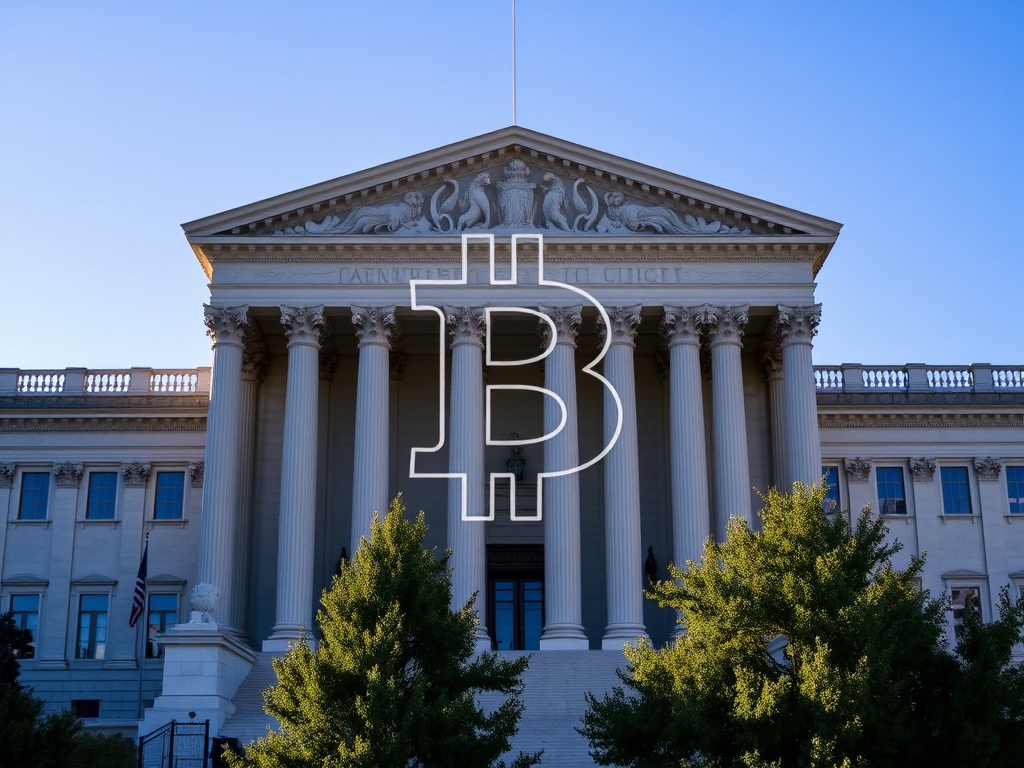The Next Phase of Global Crypto Governance
The global cryptocurrency landscape is evolving faster than ever. Once seen as an unregulated digital experiment, Bitcoin has become a trillion-dollar asset influencing governments, central banks, and investors worldwide. The future of Bitcoin regulation has therefore become one of the most debated topics in finance and technology, as nations seek a balance between innovation, consumer protection, and financial stability.
This article provides an in-depth exploration of how Bitcoin regulations are developing across the globe, the challenges regulators face, and what the future might hold for the world’s most popular cryptocurrency.
The Evolution of Bitcoin Regulation
When Bitcoin was first introduced in 2009, regulators barely noticed it. It was a niche technology for tech enthusiasts and libertarians who valued privacy and decentralization. But as Bitcoin’s market capitalization surged and institutional investors entered the space, governments realized the urgent need for a legal framework.
Over the past decade, regulations have evolved from near silence to comprehensive legal frameworks in several regions. Countries like the United States, Japan, and the European Union have begun developing policies to classify, tax, and monitor crypto assets. The future of Bitcoin regulation will likely continue this trend, with global coordination and technological understanding improving over time.
This shift represents a critical turning point. Regulation can no longer be avoided — it is becoming the foundation upon which the crypto economy will mature and expand.
Why Regulation Is Inevitable
The debate over Bitcoin regulation often centers on freedom versus control. While crypto enthusiasts value decentralization and autonomy, governments emphasize consumer protection, anti-money laundering (AML), and financial stability. Striking the right balance is essential for sustainable adoption.
Several reasons make the future of Bitcoin regulation unavoidable:
- Market Maturity: Bitcoin’s widespread adoption among institutional and retail investors demands oversight to prevent fraud and ensure stability.
- Consumer Protection: Scams and exchange collapses have led to massive losses, urging governments to implement investor safeguards.
- Financial Integration: As Bitcoin becomes integrated into traditional finance, banks and fintechs require clear compliance rules.
- Taxation and Transparency: Governments need frameworks for reporting and taxation to prevent misuse and increase accountability.
The more Bitcoin integrates into the global economy, the more necessary it becomes to have unified, transparent, and enforceable regulation.
Regional Approaches to Bitcoin Regulation
Different parts of the world are taking unique approaches to cryptocurrency oversight. Understanding these perspectives helps anticipate how the future of Bitcoin regulation may unfold globally.
United States:
The U.S. has taken a fragmented approach, with multiple agencies—like the SEC, CFTC, and FinCEN—each asserting jurisdiction over different aspects of crypto. The main challenge is defining whether Bitcoin and other cryptocurrencies are commodities, securities, or something else entirely. Future U.S. regulation may focus on establishing a unified federal framework to provide legal clarity.
European Union:
The EU has introduced the Markets in Crypto-Assets (MiCA) regulation, one of the most comprehensive crypto frameworks in the world. MiCA aims to standardize rules across member states, ensuring transparency, consumer protection, and environmental responsibility. This framework may become a global model for balanced crypto regulation.
Asia:
Asia presents a diverse picture. Japan has fully legalized Bitcoin exchanges, while China has banned crypto trading altogether. India remains cautious, exploring a middle ground through taxation and potential licensing requirements. Southeast Asia, meanwhile, has embraced blockchain innovation through fintech-friendly policies.
Latin America and Africa:
Many developing nations view Bitcoin as a tool for financial inclusion and inflation protection. El Salvador famously adopted Bitcoin as legal tender, a bold experiment being watched worldwide. In Africa, countries like Nigeria and Kenya are exploring central bank digital currencies (CBDCs) alongside regulatory guidelines for crypto trading.
The diversity of approaches shows that there’s no single regulatory path—but global cooperation is growing
The Impact of Regulation on Bitcoin’s Value
One of the most common concerns among investors is how regulation will affect Bitcoin’s price. In the short term, stricter rules can cause market volatility. However, in the long term, regulation could strengthen Bitcoin’s legitimacy and increase adoption.
Transparent frameworks encourage institutional investment by reducing uncertainty and risk. Pension funds, hedge funds, and corporations are far more likely to invest when compliance standards are clear. The future of Bitcoin regulation may therefore become one of the biggest catalysts for mainstream acceptance.
Moreover, well-crafted regulation can stabilize prices by minimizing manipulation, ensuring liquidity, and preventing exchange collapses—issues that have historically plagued the crypto industry.
The Role of Central Bank Digital Currencies (CBDCs)
An important factor shaping the future of Bitcoin regulation is the rise of central bank digital currencies (CBDCs). Over 130 countries are now exploring or developing digital versions of their national currencies.
CBDCs present both competition and opportunity for Bitcoin. On one hand, they could reduce demand for decentralized alternatives by offering state-backed digital assets. On the other, CBDCs will normalize digital money, potentially driving more people toward cryptocurrencies for privacy and autonomy.
Governments developing CBDCs are simultaneously motivated to regulate Bitcoin more closely, ensuring it doesn’t undermine monetary control or financial stability. The coexistence of CBDCs and Bitcoin will be a defining aspect of global financial evolution.
Challenges Ahead in Bitcoin Regulation
While the direction toward regulation is clear, the path is far from simple. Policymakers face numerous challenges that will shape the future of Bitcoin regulation:
- Technological Complexity: Understanding blockchain technology is still a challenge for many regulators.
- Jurisdictional Conflicts: Bitcoin operates globally, but laws are national, creating inconsistencies.
- Privacy vs. Transparency: Regulators must balance user privacy with anti-money laundering requirements.
- Innovation vs. Control: Over-regulation risks stifling innovation in one of the most dynamic sectors in finance.
Addressing these issues will require dialogue between governments, industry leaders, and technology experts.
Institutional Adoption and Compliance
Institutional participation is accelerating, and compliance is key to sustaining that growth. Large financial players like BlackRock, Fidelity, and Goldman Sachs are increasingly entering the crypto space through ETFs, custody solutions, and digital asset divisions.
These firms actively support the establishment of clear, predictable regulations. The future of Bitcoin regulation will likely involve partnerships between regulators and the private sector to create frameworks that encourage innovation while maintaining oversight.
In this sense, compliance becomes a bridge—not a barrier—to growth.
The Role of Technology in Enforcing Regulation
Blockchain technology itself can support effective regulation. Smart contracts, digital identity systems, and automated reporting can ensure transparency without compromising decentralization.
For instance, decentralized exchanges (DEXs) can integrate automated KYC mechanisms, while blockchain analytics tools help authorities detect illicit activities without breaching user privacy.
future of Bitcoin regulation may thus combine traditional oversight with on-chain verification, blending innovation with accountability.
The Global Path Forward
The next few years will likely bring greater regulatory harmonization across jurisdictions. International organizations like the Financial Action Task Force (FATF) are already setting guidelines for crypto asset service providers.
Furthermore, as environmental concerns grow, new sustainability rules may emerge, particularly concerning Bitcoin mining’s energy use. This will push the industry toward greener technologies, such as renewable-powered mining and carbon-neutral verification processes.
Ultimately, the future of Bitcoin regulation depends on collaboration—between nations, regulators, and innovators. The more constructive the dialogue, the more robust and resilient the global crypto ecosystem will become.
Predictions for the Future of Bitcoin Regulation
Experts anticipate several major developments in the coming years:
- Unified Global Frameworks: Cross-border regulatory agreements will reduce fragmentation.
- Institutional Integration: Bitcoin will become a standard investment asset once legal clarity improves.
- Environmental Accountability: Sustainability metrics will be integrated into crypto mining policies.
- Privacy-Preserving Compliance: Innovative technologies will ensure compliance without full surveillance.
- Stronger Consumer Protection: Clearer rules for exchanges, wallets, and DeFi platforms will reduce risks for users.
If implemented thoughtfully, these trends could transform Bitcoin from a volatile speculative asset into a trusted pillar of the global financial system.

in summary
The future of Bitcoin regulation represents a crucial turning point for the cryptocurrency industry. Rather than stifling innovation, thoughtful regulation can enable Bitcoin to evolve into a legitimate, stable, and widely accepted financial instrument.
As governments, businesses, and consumers collaborate to shape this new digital era, one thing is certain: Bitcoin’s journey toward regulation will define not only its destiny but also the broader evolution of global finance.
Those who adapt early—embracing transparency, compliance, and innovation—will be best positioned to thrive in this new regulatory landscape.



